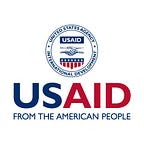Three Stories About Refugees You Won’t See in the News
There are plenty of headlines about the growing number of displaced people around the world — 60+ million at last count. Twenty million are refugees. While President Obama hosts a Leaders’ Summit on the Global Refugee Crisis on Sept. 20, we highlight three stories not often told about USAID’s critical food assistance to refugees.
Going home to Côte D’Ivoire
In 2010, presidential elections in Côte D’Ivoire resulted in political instability, violence and the displacement of 500,000–700,000 Ivoirians. Many fled into neighboring Liberia.
Starting in 2014, when things became more stable, USAID partnered with the UN World Food Program (WFP) to help Ivoirians return home and restart their lives. Although initially delayed by the outbreak of Ebola in 2014, by the end of 2015, WFP and the UN High Commissioner for Refugees (UNHCR) restarted operations to help more than 53,000 of the remaining Ivoirian refugees return home.
One such person was Angele. When violence erupted in her home community of Bakoubly in 2011, she, her daughter, grandson and sister all fled to a UNHCR camp in Liberia. In the intervening years, Angele’s sister returned on her own back to Bakoubly and, sadly, Angele’s daughter passed away in the camp. Angele and her sister were finally reunited earlier this year.
Once refugees were back in Côte D’Ivoire, nutritious food from USAID helped meet the immediate needs of families like Angele’s for three months. USAID also helped them to rebuild their lives by providing food or cash transfers in exchange for their work to restore agricultural land. Families are now earning an income farming rice and vegetables on this land, all with a little help from USAID.
Supporting Colombian refugees and host communities in Ecuador
Over the last five decades, Ecuadorian communities have opened their hearts and their homes to Colombian refugees fleeing the conflict in their country. Yet decades of living far from home can take its toll on both the refugees and their host communities, whose local services and resources are strained.
Antonio’s family (his name has been changed to protect his identity), like others, has been stretched to its limits. His family fled to Ecuador two years ago when the FARC threatened to recruit his oldest son (12 at the time) to be a soldier.
When they arrived in Ecuador, they got a small plot of land with a wooden cabin in exchange for labor on the land. But more was needed.
That’s where USAID and partner WFP came in to help both the refugees and their host communities.
By providing refugees such as Antonio and his family with e-vouchers to use at local stores, USAID has enabled them to choose their own food, and local stores and farmers have gotten a boost in their income.
With a final peace accord between the Colombian Government and the FARC about to be voted on in a referendum early next month, there is hope refugees such as Antonio can one day go home. But in the meantime, we’re there to help.
Food for Syrians in the blink of an eye
More than 650,000 Syrian refugees are now living in Jordan, stretching the capacity of the international community to respond.
Fawzia Abdallah and her extended family of nine fled Idlib, Syria, in 2012, when intensive bombing made it too difficult and dangerous for them to stay. They eventually settled in Almanara, Jordan, in an informal tent community about 30–40 kilometers from Mafraq.
Stories such as Abdallah’s abound after six years of conflict in Syria.
A pilot program using iris scan technology will continue to enhance accountability systems in place to protect Syrian refugees. Launched earlier this year in refugee camps in Jordan, this innovative payment system allows Syrians to purchase their food from local shops using the scan of their eye rather than their e-voucher debit cards.
Why the switch to iris scans? WFP believes this will help them become “more efficient, enhancing accountability and making grocery shopping easier and more secure for the refugees.” And for the refugees, they won’t have to remember to bring cash or their cards to get food. They’ll just need their eyes.
In a situation such as this, where refugees continue to rely on Jordan and the international community for support, new technology that ensures the most vulnerable are getting the help they need can only be a good thing.
Each year, about 20 percent of USAID’s emergency food assistance resources — in FY 2015, more than $400 million — goes toward supporting refugee populations, both in refugee camps and in host communities.
- Check out more on USAID’s food assistance to refugees
- Check out more on Food for Peace’s work
- Follow @USAIDFFP, @USAID
About the Author
Jessica Hartl is the lead Information Officer for USAID’s Office of Food for Peace.
